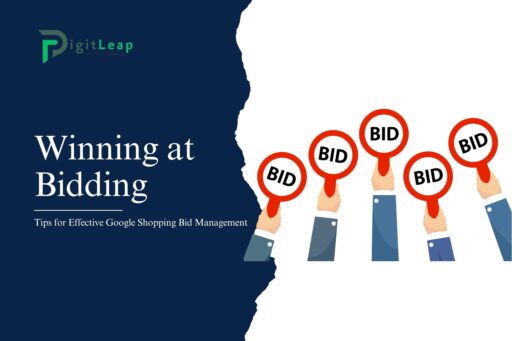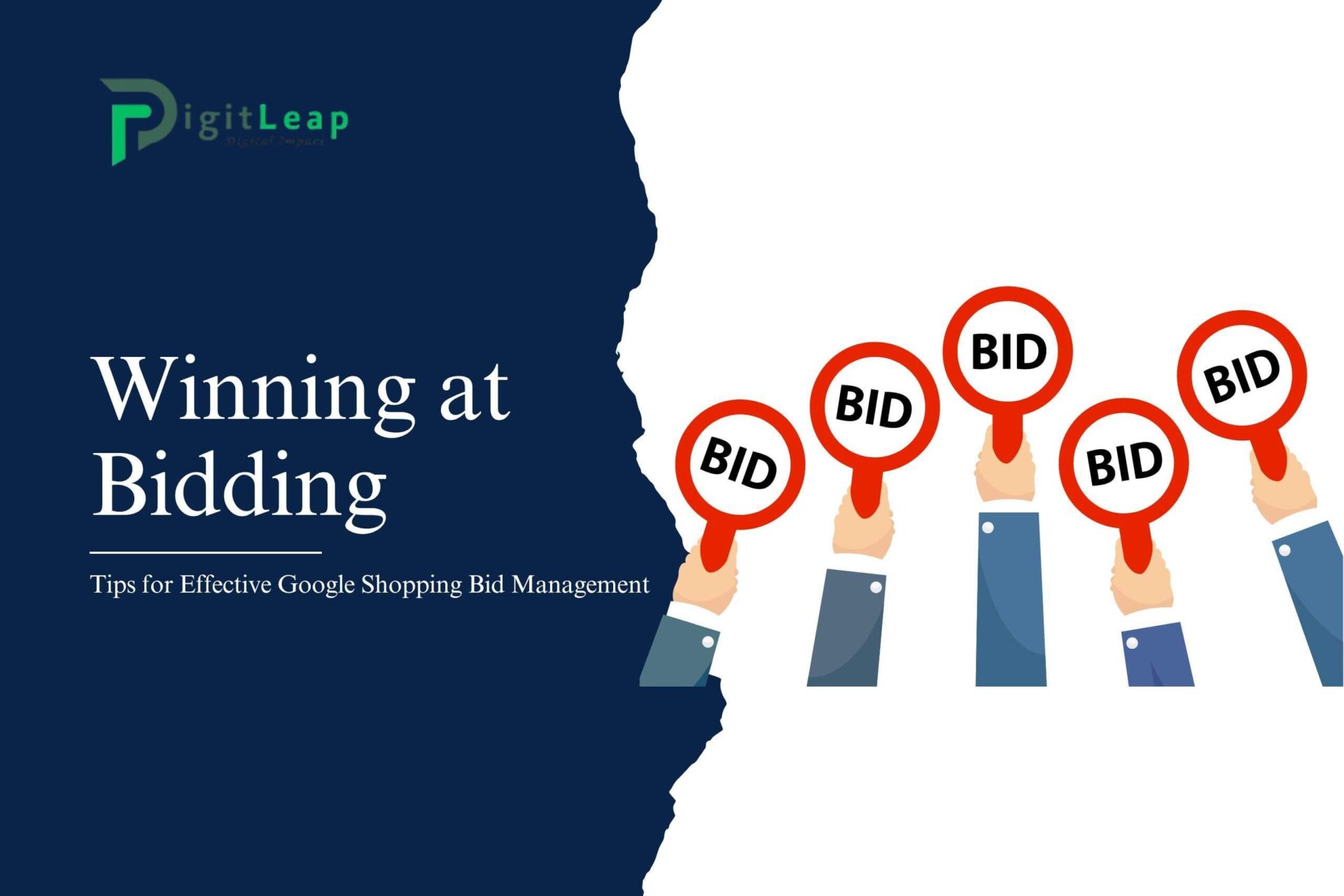Winning at Bidding: Tips for Effective Google Shopping Bid Management
In the world of eCommerce, mastering Google Shopping bid management is key to driving sales and staying ahead of the competition. Google Shopping allows businesses to showcase their products directly in search results, helping potential customers discover what you’re selling with ease. However, with so many businesses competing for the same clicks, managing your bids effectively is crucial for making the most out of your budget.
Whether you’re new to Google Shopping or looking to refine your strategy, here are some practical tips to help you win at bidding and get the most out of your ad spend.
Understanding Google Shopping Bidding
Before diving into tips, it’s important to understand how Google Shopping bids work. Unlike traditional text-based search ads, Google Shopping ads don’t use keywords. Instead, Google matches your products with relevant searches based on your product feed. Your bids determine how much you’re willing to pay each time someone clicks on your product ad. The higher your bid (and the more relevant your product), the more likely your ad will show up in front of potential customers.
Because you pay per click (PPC), optimizing your bids is critical to ensure you’re not overspending on clicks that don’t convert or underbidding and missing out on valuable traffic.
Tip 1: Set Clear Goals
The first step to effective bid management is to define your campaign goals. Are you aiming to maximize sales, increase traffic, or boost brand visibility? Each goal requires a different bidding strategy. For example:
- If you want to drive more sales, you should focus on maximizing conversion rates and set higher bids for products with high conversion potential.
- If traffic is your main goal, you might want to bid more broadly, focusing on getting as many clicks as possible.
- If you’re trying to increase brand visibility, bidding higher on more popular or competitive products can help you stand out.
Clear goals allow you to focus your efforts and allocate your budget where it matters most.
Tip 2: Segment Your Campaigns
One of the best ways to manage your Google Shopping bids effectively is to segment your campaigns. Rather than putting all your products into a single campaign, group them by similar characteristics such as:
- Product category
- Price range
- Profit margin
- Seasonality
This allows you to tailor your bids to each group. For example, products with higher profit margins can afford higher bids, while lower-margin items may need more conservative bidding. Segmenting also helps you track performance more closely, making it easier to see which products are driving the most value.
Tip 3: Use Smart Bidding Strategies
Google offers Smart Bidding, an automated bidding system that uses machine learning to optimize your bids for better performance. Some of the Smart Bidding options you can choose from include:
- Target ROAS (Return on Ad Spend): Automatically adjusts your bids to get the highest return on investment.
- Maximize Clicks: Focuses on getting the most clicks within your budget.
- Maximize Conversions: Aims to drive the most conversions with your set budget.
While manual bidding gives you more control, Smart Bidding can save time and improve results by adjusting bids in real time based on data like device, location, and user behavior.
Tip 4: Adjust Bids Based on Device Performance
Your audience might behave differently depending on the device they use. For instance, some products may perform better on mobile, while others might see higher conversions on desktop. Use device-level bid adjustments to tailor your bids based on performance trends.
If mobile shoppers are converting at a lower rate than desktop users, you can lower your bids for mobile traffic to ensure you’re not overspending. Conversely, if you notice strong performance from mobile devices, you might increase mobile bids to capitalize on that audience.
Tip 5: Optimize Bids for High-Performing Products
Keep a close eye on your high-performing products and adjust bids accordingly. If certain products are consistently generating sales or showing strong click-through rates (CTR), consider increasing your bids for those items to gain more visibility and capture more conversions.
On the flip side, if certain products are underperforming, lowering your bids can prevent overspending on clicks that aren’t turning into sales. Regularly review your product performance reports to identify which items deserve higher or lower bids.
Tip 6: Monitor Competitor Activity
Google Shopping is highly competitive, so it’s essential to keep an eye on competitor pricing and bidding strategies. If a competitor is consistently undercutting your prices, your ads might not perform as well, even if you have higher bids. Tools like Google’s Auction Insights can help you see how your bids stack up against competitors and where you might need to make adjustments.
Consider lowering bids for products where competitors offer significantly lower prices, or focus your budget on products where your pricing is more competitive.
Tip 7: Schedule Bid Adjustments
Another effective bidding strategy is to adjust your bids based on time. Use ad scheduling to increase or decrease bids during peak hours when your target audience is most active. For example, if you notice higher conversion rates during weekends or evenings, you can schedule higher bids for those times to maximize your chances of driving sales.
This approach helps you allocate your budget more efficiently, ensuring that you’re spending more when potential customers are most likely to convert and cutting back during off-peak times.
Tip 8: Test and Refine
Effective bid management requires constant testing and refining. What works today may not be as effective tomorrow, so it’s crucial to regularly test different bidding strategies, adjust your goals, and monitor performance.
Start by running small experiments, such as adjusting bids for a specific product category or using a different Smart Bidding strategy. Compare the results and make data-driven decisions to improve your overall campaign performance. The more you test, the more insights you’ll gain into what works best for your business.
Tip 9: Use Negative Keywords
Though Google Shopping doesn’t use traditional keywords, you can still apply negative keywords to filter out irrelevant traffic. If your ads are showing up for search terms that aren’t likely to lead to conversions, use negative keywords to prevent wasted clicks. For example, if you sell premium products, you might want to exclude searches that include words like “cheap” or “discount.”
This will help improve the relevance of your ads and ensure that your bids are being spent on users who are more likely to make a purchase.
Conclusion
Winning at bidding on Google Shopping is all about smart strategy and continuous optimization. By setting clear goals, segmenting your campaigns, and leveraging Smart Bidding tools, you can ensure that your budget is used efficiently and that your products are getting in front of the right audience.
At DigitLeap, we specialize in helping businesses optimize their digital marketing strategies, including effective Google Shopping bid management. Whether you’re just starting out or looking to refine your approach, we can help you get the most out of your campaigns and maximize your return on investment. Let us take the guesswork out of bidding so you can focus on growing your business.






